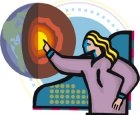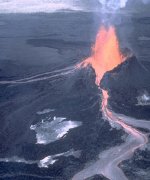
Worksheets and No Prep Teaching Resources
Reading Comprehension Worksheets
Earth Science

Earth Science
 Worksheets and No Prep Teaching Resources Reading Comprehension Worksheets Earth Science |
 Earth Science |
| edHelper's suggested reading level: | grades 9 to 10 | |
| Flesch-Kincaid grade level: | 8.19 |
|
The Earth Spits Fire
By Trista L. Pollard |

|
 1 The burps, grumbles, and hiccups that happen inside our planet produce the most fascinating changes on its surface. The Earth's crust with its shifting plates causes mountains to form, earthquakes to shake, and volcanoes to erupt.
1 The burps, grumbles, and hiccups that happen inside our planet produce the most fascinating changes on its surface. The Earth's crust with its shifting plates causes mountains to form, earthquakes to shake, and volcanoes to erupt. |
Create Weekly Reading Books
Prepare for an entire week at once! |
| Leave your feedback on The Earth Spits Fire (use this link if you found an error in the story) |
 |
Earth Science
|
 |
High School Reading Comprehensions and High School Reading Lessons
|